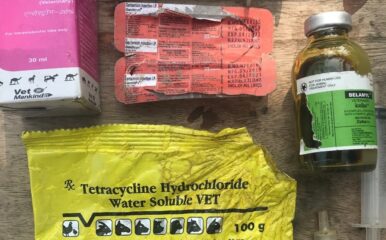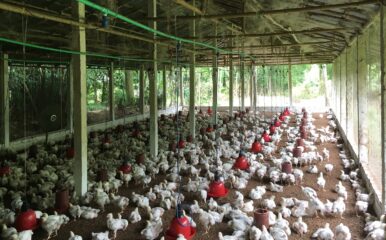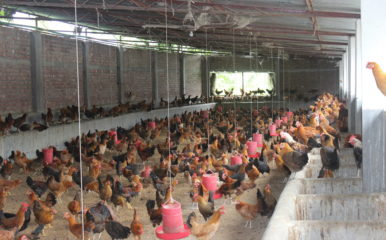
An SDG focus and implications for One Health research
Published on 30/07/2019
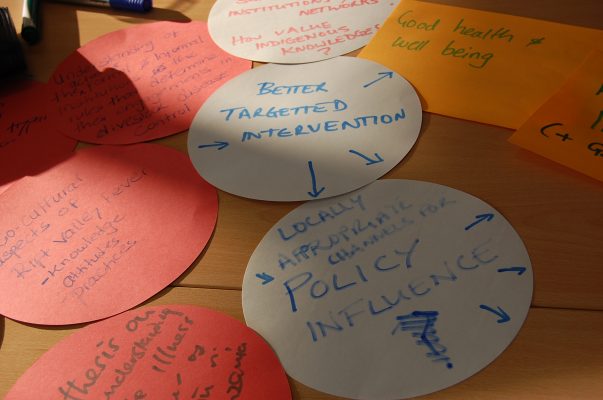
Naomi Marks
Diseases might originate from one species (and sector) and affect another, and they might affect not only the health and wellbeing of human populations, but also impact the health of economically important livestock or ecologically significant wildlife.
Consequently, zoonoses discourse spans multiple bureaucratic and disciplinary silos, resulting in fragmented understandings that make it very easy for zoonotic diseases to ‘fall through the cracks’.
These, and other reasons, have prompted some scholars to refer to zoonoses as ‘wicked problems’ which are governed by bounded rationality and dynamic circumstances. They argue that these diseases, which cause more than 60% of infectious diseases in people, are therefore best understood through an interdisciplinary lens and this has resulting in calls for ‘all hands on deck’ for their study – or what is also called a One Health approach to research.
The realisation that interesting ideas emerge when people of different backgrounds come together is not limited to zoonoses scholars alone. This insight was famously put to use by managers of the Bell Labs, whose building architecture and organisational culture was specially designed to promote cross-disciplinary dialogue, eventually resulting in some of the biggest electronics and communications-related inventions of the 20th century.
Other scholarly work on boundary spanners has pointed out how boundaries (disciplinary or bureaucratic) might be viewed not only as separating barriers, but also as junctures that enable connections between different systemic boundaries. Such junctures allow interface and mutual learning with other systems.
Implementing interdisciplinarity
However, even with this positive perspective, conducting interdisciplinary research remains challenging because of multiple individual and institutional incentives. Silos are deeply embedded within academia and disciplinary-pure work is acknowledged in institutional and individual assessments. I recently attended a workshop on interdisciplinarity in zoonoses research, convened at IDS as part of the ongoing Development Studies Association and ESRC ‘Meeting the Challenges’ workshop series. At this, participants pointed out the perverse incentives for early-career researchers who might feel disciplinary-pure work to be a better use of their time rather than investing time and energy to developing and sustaining cross-disciplinary platforms which might not pay out dividends immediately.
Given the nature of challenges to interdisciplinary research, how does one surmount them? The opening presentation by IDS Director Melissa Leach at the workshop made the case for zoonoses as a very apt case for interdisciplinary research as the topic was “sitting at, and reflective of, the nexus of multiple sectors of SDGs”.
The realisation became much more real to many of us through a group activity in the workshop. After a day-long discussion around the need for, mechanics of and barriers to interdisciplinary research around zoonoses. We were asked to develop an imaginary research proposal close to our heart, devise its goals and outputs and, more crucially, an SDG that the project aimed to influence. Each group was asked to chart out the pathways through which their selected project outputs aimed to influence the chosen SDG.
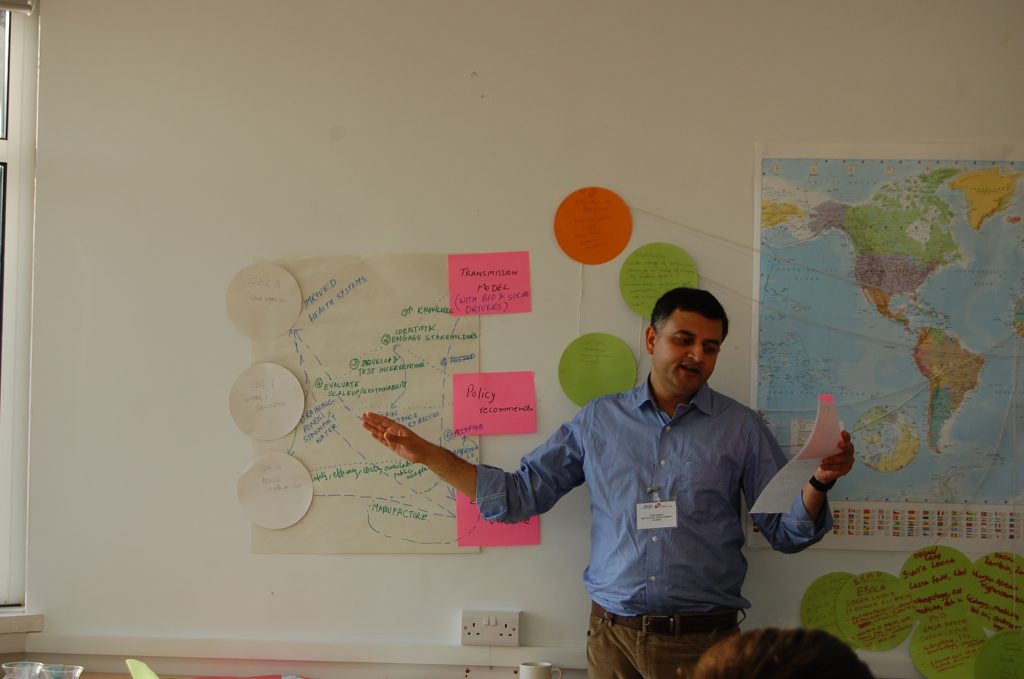
While this was an exercise many of us do in developing proposals, mostly as a post hoc justification after the larger goals and scope of activities have already been devised, it was a very different experience to do so in a group exercise keeping the SDGs front and centre.
The discussion in our group, comprising bioscientists and social scientists, changed from arming the proposal with our disciplinary perspectives to the developmental challenges associated with the topic we chose. The development perspective, I realised, gave a focus to our discussions (and also a sense of purpose) which was not there had we been discussing only the (very real) technical challenges of mounting our chosen inquiry.
While ‘disciplinary purists’ might not always be comfortable discussing issues outside their core areas of expertise, an exercise like this might allow the development of a shared vision for scientific collaborations that looks at the bigger picture, while still retaining detail-oriented rigorous scientific practices. As Nobel prize winner physicist, and former American Energy Secretary Steven Chu recalled of his time working in the Bell Labs, working in an applied science environment “doesn’t destroy a kernel of genius, it focuses the mind”.
Knowledge for societal priorities
This is a process which can be aided by a more proactive engagement between the social and natural sciences. Science policy researchers like Andy Stirling have made a case that social sciences, due to the scope of their inquiries, might facilitate such broader, interdisciplinary, conceptualisation of ‘nexus’ research if allowed to go beyond their traditional roles of being handmaidens to the harder sciences.
Social sciences allow examination, of both the ‘objects’ of the research inquiry (natural phenomena and their linkages) as well as the ‘dynamics of disciplinarity’ through their focus on politics of knowledge. This, ultimately, can help researchers produce socially relevant knowledge but also, importantly, help them to understand how best this knowledge can be used to forward societal priorities.
Ultimately, the key to bringing researchers from different disciplines together, similar to other modes of collaboration, is to recognise that individuals (and disciplines) come with their own strengths. A feeling of mutual respect, recognition that all are working towards similar goals, albeit in different ways can allow us all to work together. As Melissa Leach said, triangulation, if not integration, is a goal interdisciplinarity can strive for – so rather than aiming for a lowest common denominator ‘soup’, we need to enjoy together the different dishes that people can bring to the table.
This blog was first published as an IDS Opinion piece. It followed a workshop attended by, among other zoonoses researchers, Hub Principal Investigator Fiona Tomley and co-Investigators Ayako Ebata, Guillaume Fournié, Hayley MacGregor and Punam Mangtani, as well as the author Syed Abbas.

